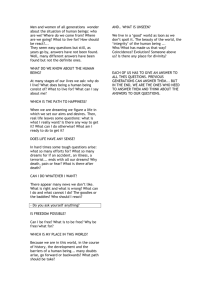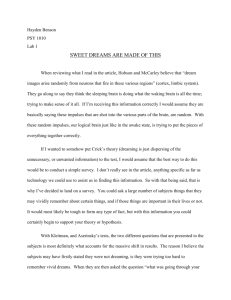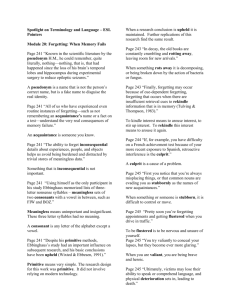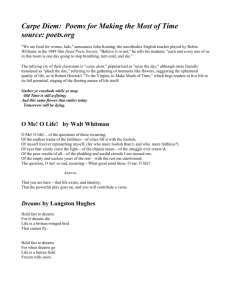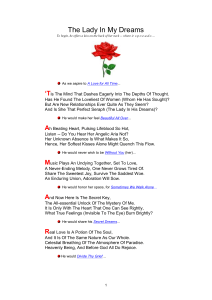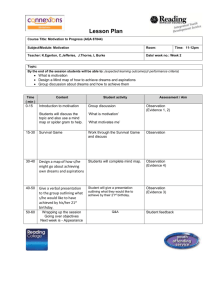WJEC PSYCHOLOGY SCHEME OF WORK – MEMORY TOPIC
advertisement
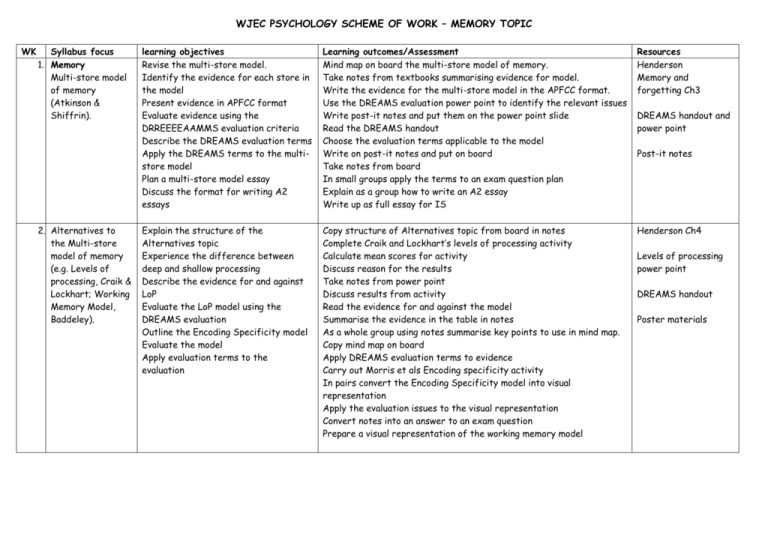
WJEC PSYCHOLOGY SCHEME OF WORK – MEMORY TOPIC WK Syllabus focus 1. Memory Multi-store model of memory (Atkinson & Shiffrin). 2. Alternatives to the Multi-store model of memory (e.g. Levels of processing, Craik & Lockhart; Working Memory Model, Baddeley). learning objectives Revise the multi-store model. Identify the evidence for each store in the model Present evidence in APFCC format Evaluate evidence using the DRREEEEAAMMS evaluation criteria Describe the DREAMS evaluation terms Apply the DREAMS terms to the multistore model Plan a multi-store model essay Discuss the format for writing A2 essays Learning outcomes/Assessment Mind map on board the multi-store model of memory. Take notes from textbooks summarising evidence for model. Write the evidence for the multi-store model in the APFCC format. Use the DREAMS evaluation power point to identify the relevant issues Write post-it notes and put them on the power point slide Read the DREAMS handout Choose the evaluation terms applicable to the model Write on post-it notes and put on board Take notes from board In small groups apply the terms to an exam question plan Explain as a group how to write an A2 essay Write up as full essay for IS Resources Henderson Memory and forgetting Ch3 Explain the structure of the Alternatives topic Experience the difference between deep and shallow processing Describe the evidence for and against LoP Evaluate the LoP model using the DREAMS evaluation Outline the Encoding Specificity model Evaluate the model Apply evaluation terms to the evaluation Copy structure of Alternatives topic from board in notes Complete Craik and Lockhart’s levels of processing activity Calculate mean scores for activity Discuss reason for the results Take notes from power point Discuss results from activity Read the evidence for and against the model Summarise the evidence in the table in notes As a whole group using notes summarise key points to use in mind map. Copy mind map on board Apply DREAMS evaluation terms to evidence Carry out Morris et als Encoding specificity activity In pairs convert the Encoding Specificity model into visual representation Apply the evaluation issues to the visual representation Convert notes into an answer to an exam question Prepare a visual representation of the working memory model Henderson Ch4 DREAMS handout and power point Post-it notes Levels of processing power point DREAMS handout Poster materials WK Syllabus focus 3. The role of emotion in memory (e.g. flashbulb memories, repression, depressive state). learning objectives Use examples from own life to illustrate emotion in memory Debate about the usefulness of flashbulb memory Decide on most common flashbulb memory in UK Gain an understanding of current view of flashbulb memory Be able to summarise evidence Learning outcomes/Assessment Look at pictures from recent events (Diana, 9/11, Tsunami) carry out questions from page 58 Henderson Whole group discussion on how we recall these events Vote on the event that is most remembered in UK (results on BBC website) Listen to exert from ‘all in the mind’ on BBC Flashbulb memory activity from psychlotron Summarise key points from flashbulb memory and evaluate on revision sheet Resources Ch 4 Henderson Pictures of recent major events Handouts from psychlotron AS notes on defence mechanisms Describe the evidence relating to flashbulb memory Evaluate flashbulb theory of memory Repression activity from psychlotron using AS Notes and general textbooks Revise psychodynamic approach/defence mechanisms Discuss the causes of depression Apply defence mechanisms to memory Take notes from Radio 4 programme on memory Mind map the different explanations of the effects of depression on memory Handout on Depression and memory http://www.bbc.co.uk/ radio4/memory/progr ammes/sharpen_memo ry1.shtml DREAMS handout Describe the effects of depression on memory Evaluate the role of emotion in memory Apply DREAMS evaluation terms to the role of emotion in memory WK Syllabus focus 4. Explanations of forgetting (e.g. decay, displacement, context dependency, interference). learning objectives Theorise the causes of forgetting Define key terms related to forgetting Contrast different explanations of forgetting Apply DREAMS evaluation terms to explanations of forgetting 5. Explanations for disorders of memory (e.g. Amnesia, Alzheimer’s disease). Discuss the causes of different disorders of memory: Alzheimers Korsokoff syndrome Amnesia Gain an understanding of the trauma of memory loss Learning outcomes/Assessment Split into two groups Group 1 prepare a 20 minute lesson on the Decay theory of forgetting, complete with handouts and activities Group 2 complete a 20 minute lesson on displacement theory of forgetting with handouts and activities Resources Chapter 5 from Henderson Resources on forgetting from psychlotron Groups deliver their lessons Mindmap the key points from the student led lessons Convert the mind map into an essay plan Evaluate different explanations of forgetting Internet research on the different types of disorders of memory Mind map the disorders of memory Watch Memento as an example of amnesia Extend mind map to include evaluation of the use of case studies in disorders of memory Evaluate Disorders of Memory Listen to radio 4 programme on the effects of memory loss on everyday life DVD of Memento Handout of the disorders http://www.bbc.co.uk/ radio4/memory/progr ammes/me_and_my_m emory1.shtml


